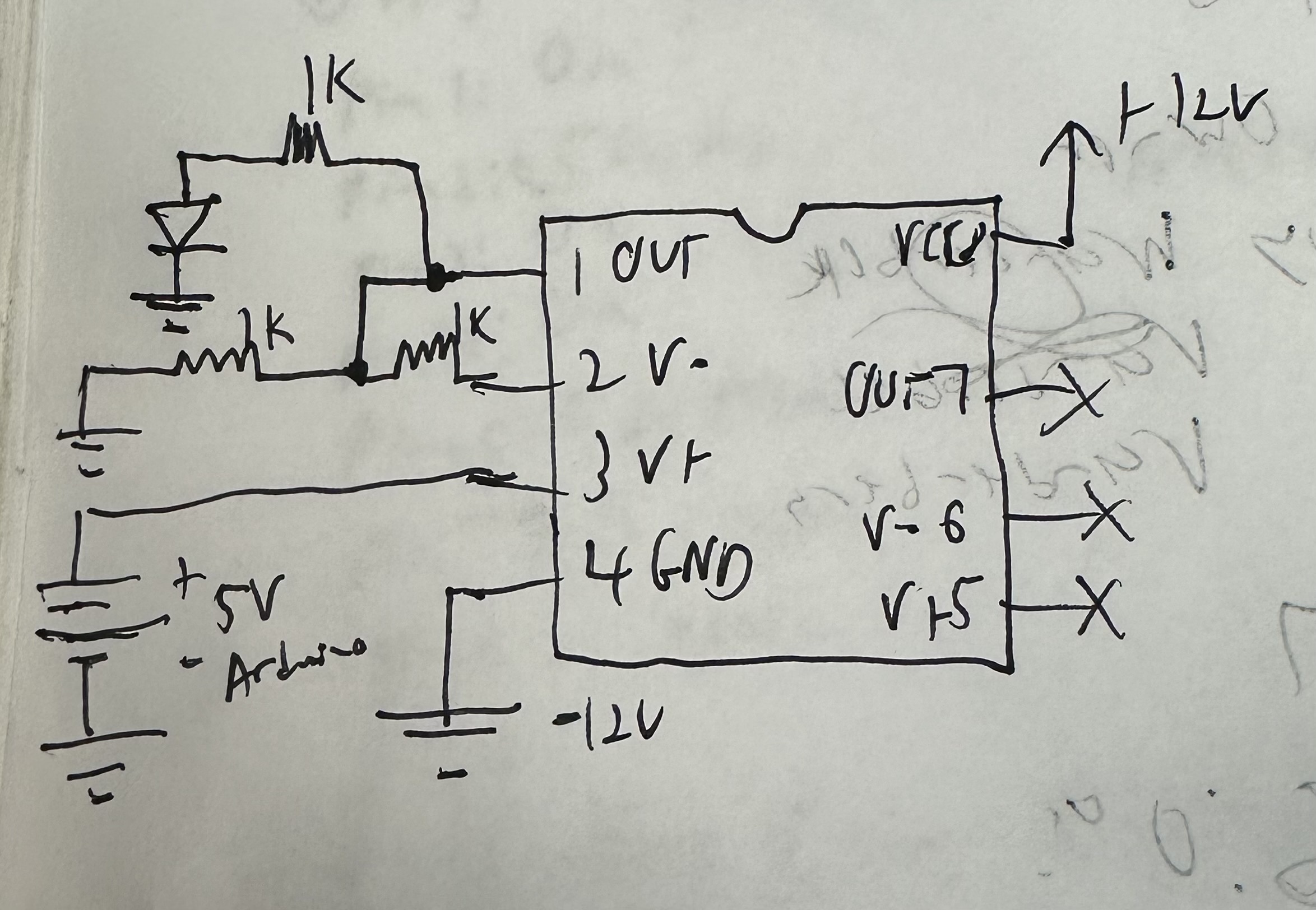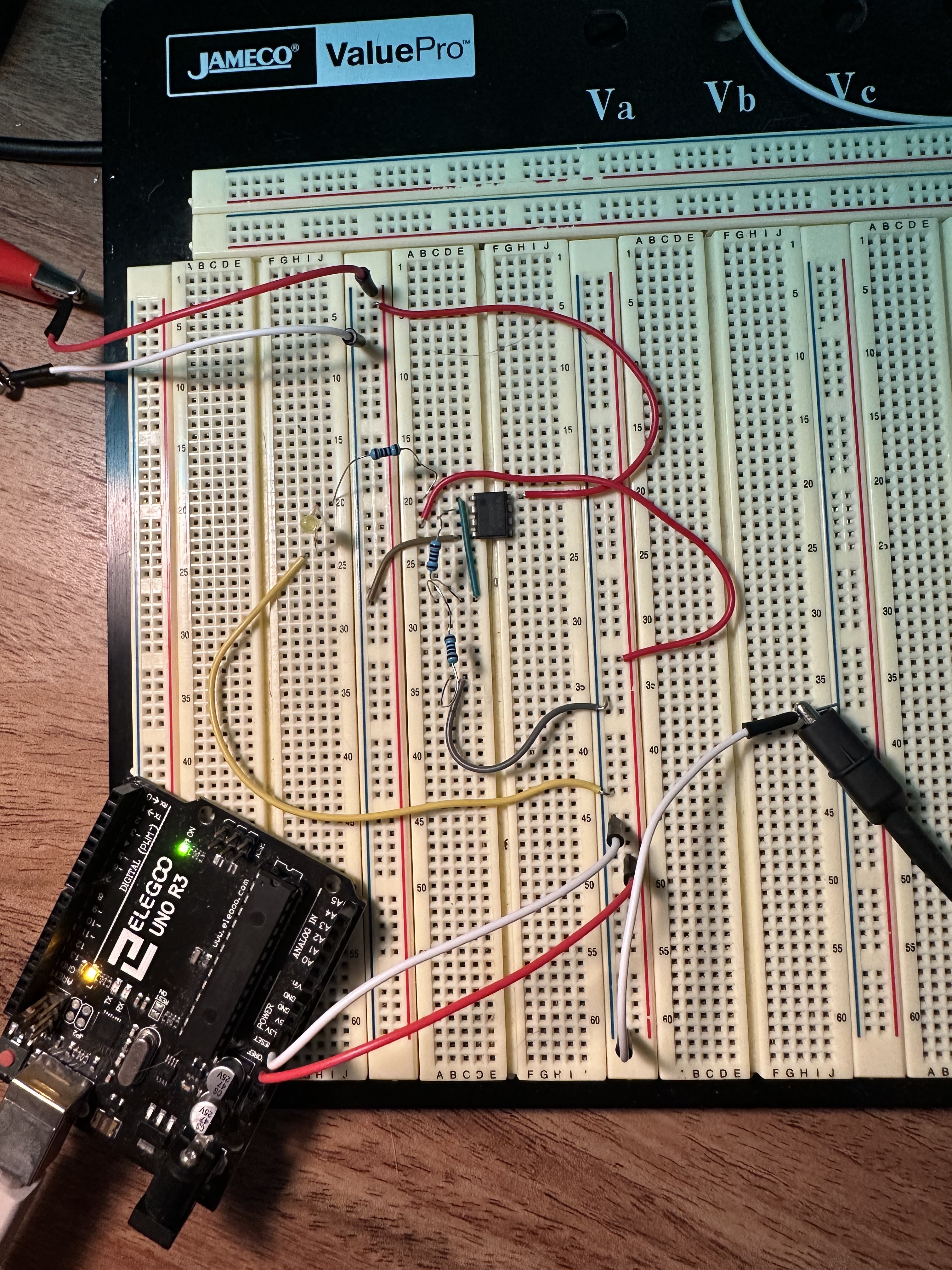I tied the Arduino's GND to the power supply GND, the output is still 10V, tried different ICs as well, not really sure what the issue is at this point. Tying the non inverting input pin to ground does turn OFF the LED, but the led stays on regardless if the 5V is coming from the arduino or not, it seems that the op amp outputs 10V regardless of the non-inverting pin, however if I use different resistors to lower the gain or change the input voltage to 3.3V instead of 5V, I do get the output voltage. I just don't understand how there can be 10V at the output with no voltage from the inverting or non-inverting pin.
Drich98
 Here's a schematic representation of what I built on the breadboard, establishing the same ground point works but the LED still turns on even when V+ is disconnected from the 5V Arduino pin.
Here's a schematic representation of what I built on the breadboard, establishing the same ground point works but the LED still turns on even when V+ is disconnected from the 5V Arduino pin.
I understand your caution, however I understand the theory behind OP-Amps, theory can only go so far which is why I'm building a circuit on a breadboard now. I should clarify that the basic rules for ideal op-amps I have a grasp of, although I can never seem to remember these rules. For example, I have the formulas for a BJT and MOSFET transistors memorized because I spent a lot of time reading and using them in practical applications. Op-amps I have spent a lot of time reading but no time building circuits, which is essentially what I am trying to do now. I have a degree in EE, and at this point this is one of the basic components that wasn't covered much in university, nor did reading or doing practice problems help. I'm very much a hands on learner, I can read formulas and equations all day but if I don't apply what I learned I'll forget it after several days unless I repeatedly practice.

But that's the thing, it outputs 10V even when the 5V rail from Arduino is disconnected at V+ (pin 3).